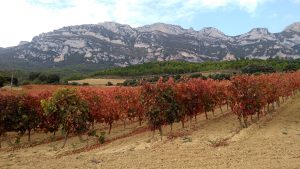Teresa and I recently spent a week wandering about north-central Spain. On the morning of Thursday, 2 November, we left Logroño (La Rioja) with the intention of driving an hour or so to Vitoria-Gasteiz (Basque Country). For a drive of this length we generally stay off the freeway and pick a meandering route that looks interesting.
We had a Lonely Planet guide for Spain in the car and I looked at it after Teresa started driving. It mentioned a village that our route took us through, so when we arrived at Laguardia five minutes later, we stopped to have a look.
Luckily, there was a tourist info site open. Inside the office was a map of the wine cellars under our feet, and we learned that a tour would soon be starting (In English!).
We had a few minutes before the tour started and I walked to a tower on the edge of town (about 30 seconds or so) and snapped a few photos of the landscape.
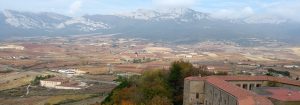
Teresa and I were the only ones who showed up for this tour at noon. Our guide told us that her family had lived in Laguardia for 500 years, and had been making wine for the past 300. Apparently, the 1500’s were a period of constant strife in the area, and the residents of this walled town dug a complex of caves underneath the houses – primarily for taking refuge during periods of war. About 300 years ago, things calmed down a bit and the residents (including her forebears) began to use the caves for producing and storing wine. When first built, the caves were all connected to each other, but when they began to store wine down there, most households closed off the openings to adjacent household caves.
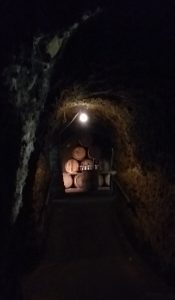
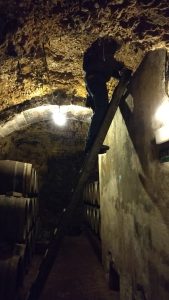
This family now has a modern production facility outside the village walls, but still produces a lot of product using traditional methods. For example, their young wine (vino joven) production does not bother with de-stemming the grapes. Grapes, leaves, stems, are piled on top of a layer of branches (to act as a filter to prevent drain blockage), and the whole mass is pressed.
Higher quality Crianza, Reserva and Gran Reserva wines are made with greater care in the modern facility nearby. But the barrels are brought into the caves for aging in French and American oak barrels.
Broadly speaking, American oak imparts a stronger flavor, akin perhaps to vanilla or coconut than the “spicier” flavors attributed to the French oak. This bodega ages Crianza wines with about 80% American and 20% French barrels. The tank on the right is used for mixing barrels of wine prior to bottling.
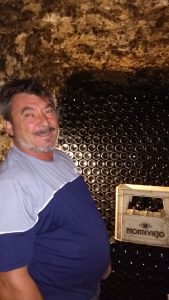
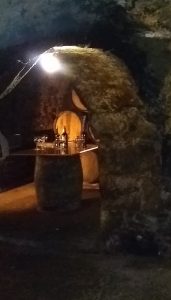
Another point of interest — spontaneous fermentation is used in this area. I specifically asked about the types of yeast they use and our guide said they never added yeast.
At the end of the tour we were invited to taste the Crianza, Reserva and Gran Reserva in the cellar nook pictured at right.
These were very generous tastes – so generous that we felt we should hang out in town for a few hours longer before hitting the road again and completing the journey to Vitorio.
I will close this entry with a view of the fall foliage in the area.
